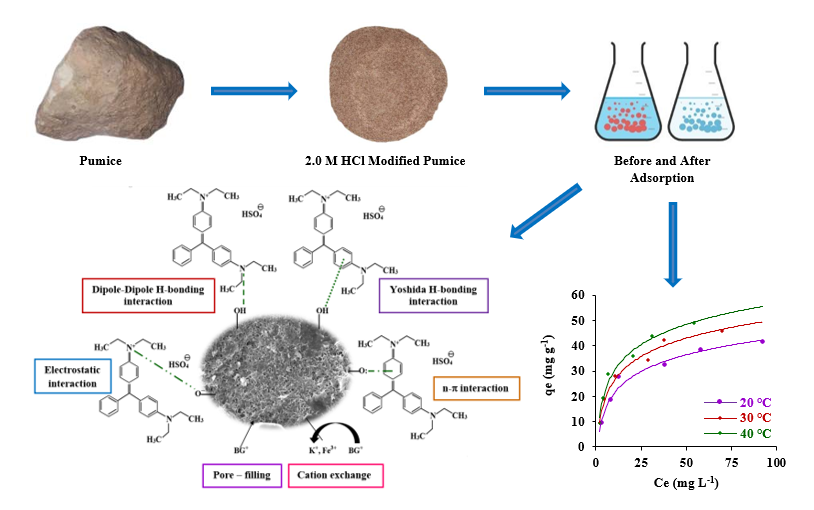Adsorption Behavior and Mechanism of Brilliant Green Dye onto Acid-modified Mesoporous Volcanic Pumice
Main Article Content
Abstract
Water pollution is a major problem in the environment. The important one is the dying effluent from the textile industry. Dye effluent has affected human health and aquatic life. Recently, natural adsorbents have been most commonly used for dye treatment wastewater. This study explores the adsorption mechanism of brilliant green onto HCl-modified pumice. It involves a comparative analysis of the raw and HCl-modified pumice's characterization and adsorption properties. The adsorption experiments were carried out by considering several parameters, such as pH, contact time, initial dye concentrations, and temperatures. The research indicated that the raw and acid-treated pumice possess Si-OH and Si-O-Si groups. These pumice adsorbents are classified as mesoporous, exhibiting BJH pore diameters of 3.23 nm for the raw form and 3.69 nm for the acid-modified variant. The adsorption data revealed that the uptake of brilliant green dye was maximal at a pH of 8. The equilibrium results closely matched the Langmuir isotherm model. The maximum adsorption capacities were 37.13, 40.17, and 42.73 mg g-1 for the raw pumice, and 46.72, 51.81, and 56.17 mg g-1 for the modified pumice at 20, 30, and 40 °C, respectively. Furthermore, the removal efficiency of brilliant green dye with modified pumice was 91.93%, 95.29%, and 96.27% at 20°C, 30°C, and 40°C, respectively. The pseudo-second-order model was the most suitable for elucidating the kinetic adsorption data. The thermodynamic analysis revealed that the adsorption process was endothermic, spontaneous, and physical. Dipole-dipole H-bonding interaction, Yoshida H-bonding, electrostatic interaction, n-𝝅 interaction, cation exchange, and pore filling were all engaged in its process. Consequently, the local pumice volcanic rock became a great, cheap, abundant, and environmentally friendly adsorbent for removing dyes from effluents.
Article Details

This work is licensed under a Creative Commons Attribution-NonCommercial 4.0 International License.
Published articles are under the copyright of the Applied Environmental Research effective when the article is accepted for publication thus granting Applied Environmental Research all rights for the work so that both parties may be protected from the consequences of unauthorized use. Partially or totally publication of an article elsewhere is possible only after the consent from the editors.

